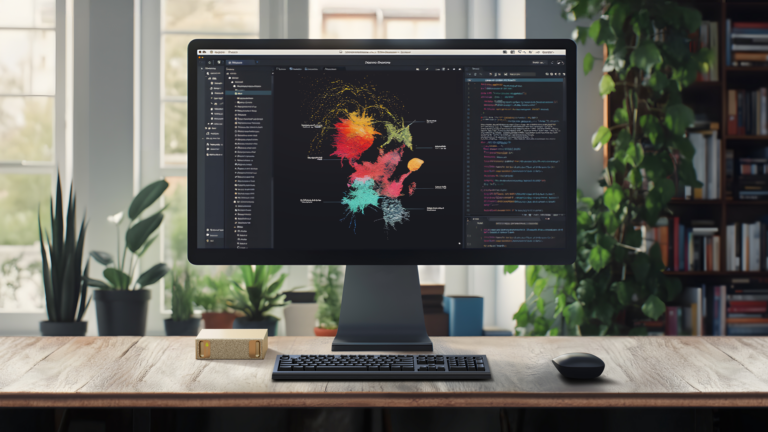Nvidia’s $3,000 Personal AI Supercomputer is about to redefine AI accessibility.
Nvidia, a leading company in the field of computer intelligence, has taken a significant step toward expanding and facilitating artificial intelligence development by unveiling its new desktop AI supercomputer, Digits.
Announced during CEO Jensen Huang’s keynote at CES, this breakthrough system offers unparalleled capabilities for independent researchers, developers, and hobbyists alike, all from the comfort of their own spaces. Priced starting at $3,000 and roughly the size of a small book, the Digits machine aims to support the next wave of AI innovation without reliance on large data centers.
Advanced Technological Specifications
Equipped with the cutting-edge GB10 Grace Blackwell “superchip,” Digits is engineered for the rapid computation necessary to train and deploy artificial intelligence machines efficiently. With 128 gigabytes of unified memory and up to 4 terabytes of NVMe storage, the device is optimized to manage vast and complex AI models seamlessly.
Nvidia claims that Digits can independently run a large language model containing up to 200 billion parameters—a feat that traditionally required substantial cloud-based resources.
For even greater power, two Digits systems can be interconnected using Nvidia’s proprietary high-speed link. This setup supports the execution of Meta’s open-source Llama model at its most sophisticated configuration of 405 billion parameters, upping the performance of artificial intelligence machines that are based on this model. Such capacity rivals traditional data center setups, offering an unprecedented opportunity for smaller-scale operators to explore AI capabilities comparable to major platforms like OpenAI’s GPT-4.
Transforming AI Accessibility and Development
While many companies are striving to become ‘the next Nvidia’, the main player in the AI field stands strong.
Previously, developing or testing large-scale AI models required renting cloud services or building bespoke systems with specialized chips. With Digits, Nvidia removes these barriers, creating a platform where independent developers, small organizations, and academic institutions can test AI models that approach the scale of commercial giants.
Huang highlighted the profound potential of this technological shift, stating that making AI supercomputing accessible to every data scientist and AI researcher could shape the entire AI market and associated trends.
Industry Implications
The rise of personal AI supercomputers is a relatively new direction and market trend emphasizing decentralized AI development and reduced dependency on cloud infrastructure. Nvidia’s stock performance has soared in tandem with the AI boom, as enterprises race to integrate computer intelligence technologies into their operations.
Besides hardware innovations, Nvidia is expanding its software ecosystem by releasing tools designed for building AI agents—autonomous programs leveraging large language models to execute tasks independently. These tools, including customized versions of Llama called Nemotron, are tailored for instruction following and task planning, catering to the growing demand for agentic AI solutions in business environments.
The increasing prevalence of agentic AI represents the next frontier in artificial intelligence machine development. Organizations see autonomous AI agents as essential for streamlining operations, enhancing customer interactions, and reducing operational costs. Nvidia’s advancements in both hardware and software position the company as the key driver behind this trend.
The Digits system also means we will see a shift toward distributed computing models, where businesses and developers rely less on centralized cloud services and more on localized, high-performance computing solutions. This shift may lead to faster, more secure AI processing, making AI-driven insights more accessible and actionable across various industries.
Important questions answered
Q: What makes the Nvidia Digits machine unique compared to traditional AI development platforms? A: The Digits system combines high computational power with a compact form factor, enabling local AI model training and deployment without relying on cloud services or extensive data center setups.
Q: How does Nvidia’s Digits support the development of large language models? A: It can independently run models with up to 200 billion parameters and supports interconnected systems to handle models up to 405 billion parameters, enabling capabilities comparable to major cloud-based platforms.
Q: Why is the availability of personal AI supercomputers significant for the AI industry? A: It democratizes access to advanced AI research tools, empowering independent developers and smaller organizations to experiment and innovate without prohibitive costs or resource constraints.
Q: What software tools accompany Nvidia’s hardware advancements? A: Nvidia offers tools for building and managing AI agents, including optimized versions of Llama called Nemotron, designed for autonomous task execution and enhanced operational efficiency.
Q: How does Nvidia’s strategy reflect market trends in AI development? A: By addressing the need for decentralized computing and autonomous agent integration, Nvidia positions itself as a leader in meeting the evolving demands of AI-driven industries.
Q: What role could AI agents play in future business operations? A: AI agents are expected to revolutionize processes by automating routine tasks, improving customer service, and optimizing resource management, making them invaluable assets for enterprises.
If you are interested in this topic, we suggest you check our articles:
- AI-Powered Supercomputers: Advancing Technology and Innovation
- AI-Powered Virtual Cohosts: Intelligent Streaming Assistant Unveiled, Promising to Transform Live Streaming Technologies
- Agentic AI: Everything You Need to Know
Source: Nvidia

